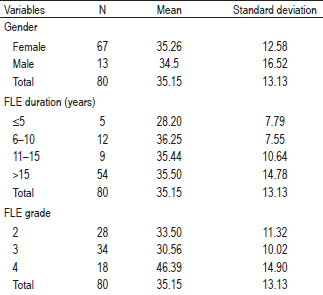Stigma and stigma-induced stress in filarial lymphoedema patients in Puducherry, India
DOI:
https://doi.org/10.17532/jhsci.2023.1998Keywords:
Stigma, stress, filariasis, morbidity management and disability prevention, lymphoedema, Likert scaleAbstract
Introduction: The morbidity management and disability prevention (MMDP) strategy for elimination of lymphatic filariasis (ELF) focuses on alleviating the sufferings of about 36 million filariasis patients living in 49 endemic countries. At present, available quality of life questionnaires are not adequate to address the stigma and stress of filarial lymphoedema (FLE) patients. Therefore, a comprehensive and a robust stigma and stress assessment tool needs to be developed.
Methods: We developed 49 item SARI-FLE-Version-2 questionnaire for stigma assessment and 20 item PSS-FLE-Version-2 questionnaire for stress assessment and tested it among different grades of FLE patients. We followed the Likert scale scoring system and conducted a statistical analysis using SPSS IBM version 25.0.
Results: Of the 80 lymphatic filariasis (LF) patients assessed, 35.0%, 42.5%, and 22.5% had grades 2, 3, and 4 LE of the lower extremity, respectively. The developed stigma tool had an excellent internal consistency, as indicated by high Cronbach alpha values for all six domains. There was a significant correlation (p < 0.05) between different stigma domains. In three domains (cognitive function, social stigma, and experienced stigma), the mean stigma scores were significantly higher for the grade 4 patients compared to grade 2 patients (p < 0.02).
Conclusion: Stigma and stress assessment tools in the form of 49 item SARI-FLE-Version-2 and 20 item PSS-FLE-Version-2 questionnaires are reliable in quantifying the stigma and stress of LF patients. There is a scope to incorporate these tools in the MMD
Downloads

Downloads
Published
License
Copyright (c) 2023 Gnanasekaran Vijayalakshmi, Perumal Vanamail, Periyasamy Mahendiran, Ramanathan Meena, Lourduraj De Britto

This work is licensed under a Creative Commons Attribution 4.0 International License.










